There can be your advertisement
300x150
From Khrushchev to Brezhnev: Evolution of Soviet Mass Housing
Behind every layout change of these apartments lies not just an architectural solution, but a whole era
Remember the feeling when you first stepped through the threshold of an apartment where you would live—your very own? Millions of Soviet citizens experienced this when they received the keys to standard apartments. Tiny kitchens, narrow hallways, thin walls—today we view these "boxes" with a mixture of nostalgia and irony. But behind every layout change lies not just an architectural solution, but a whole era with its own values, opportunities, and dreams of the future.
Main points from the article:
Khrushchevks appeared in the 1950s as a solution to the most acute housing crisis, when millions of people lived in communal apartments and barracks;
Over 25 years of evolution, ceiling heights in standard housing rose from 2.5 to 2.8 meters, and kitchen area increased from 5 to 12 square meters;
Brezhnevks were so solid that they still make up a significant portion of Russia's housing stock;
- Standard construction reflected not only the country's economic capabilities but also changing views on comfort.
Desperate measures in desperate times: The birth of Khrushchevks
Imagine the Soviet Union in the mid-1950s: a country rebuilding industry after war, launching the first satellite, yet millions of citizens still lived in barracks, basements, and communal apartments. The average living space per person was less than 4 square meters—like having a bedroom the size of a double bed as your only private space.
"Our people have been waiting for apartments for years. We need to build cheap houses with small apartments, without architectural excesses,"—these words of Nikita Khrushchev became a death sentence for architectural "excesses" and the beginning of an era of panel house construction.
The first experimental Khrushchevk rose in Moscow's Cheremushki in 1956, and by 1961, mass construction of five-story buildings had spread across the Union. The technological breakthrough was impressive: assembling a five-story building took only 12 days. But at what cost?
Related articles:
- Most Common Series of Residential Buildings in Russia
- History of Standard Apartments: From Khrushchevks to Euro-2s and Euro-Lofts
Architecture of the Khrushchevk: Minimalism not by choice, but necessity
Khrushchevks from the first series (K-7, 1-464, 1-335) are the quintessence of functional minimalism:
Heights of 2.5 meters (compared to 3-3.2 meters in Stalin-era buildings);
Kitchens the size of modern walk-in closets—5-6 square meters;
Combined bathroom with an area of about 3 square meters (try turning around!);
Total area of a two-room apartment—42-44 square meters;
No elevators or garbage chutes (hence the five-story limit);
Wall thickness in panel houses—only 35-40 cm.
The walls in these buildings were so thin that neighbors inevitably became part of your private life. "We all know who is fighting with whom and what they’re cooking for dinner," joked the residents of Khrushchevks.
But despite all their flaws, Khrushchevks solved the main task—providing individual housing to millions of families. From 1959 to 1985, about 54 million people received apartments in such buildings—almost a quarter of the USSR's population. Construction speeds were unprecedented: by 1964, about 11 square meters of housing were built per second.
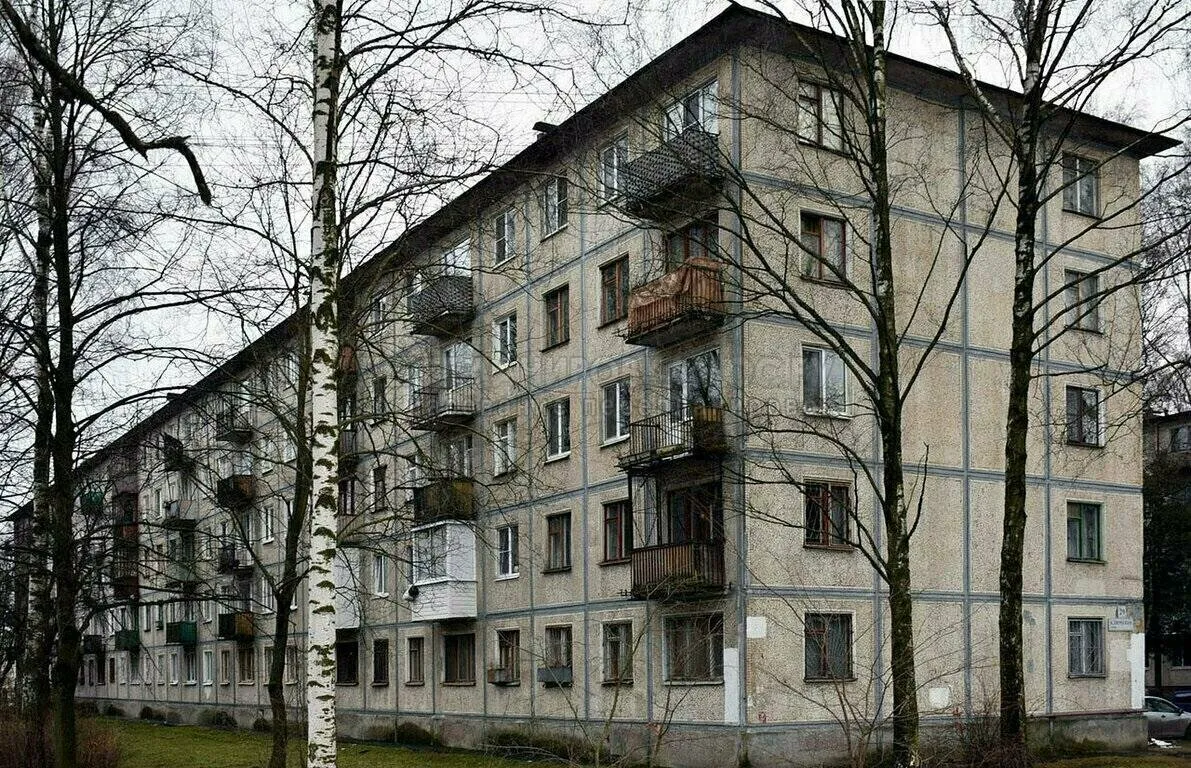 Photo: pinterest.com
Photo: pinterest.comTransitional Period: From Khrushchev Asceticism to Brezhnev Comfort
By the end of the 1960s, the acute housing shortage gave way to understanding the need for improving living conditions. In 1969, under Brezhnev, the decree "On Measures to Improve the Quality of Housing and Civil Construction" was adopted.
The first "Brezhnevks" were built in parallel with Khrushchevks, but had significant improvements:
Ceilings rose to 2.7 meters—an incredible advancement!;
Kitchens expanded to 7-8 square meters;
Separate bathroom was introduced;
Total area of a two-room apartment increased to 45-48 square meters;
Elevators were introduced in buildings over five floors;
Sound insulation improved—now neighbors could only hear loud arguments.
"If a Khrushchevk is a roof over your head, then a Brezhnevk is real housing," said people at the time. The service life of Brezhnevks doubled compared to Khrushchevks—50 years versus 25.
The Peak of Standard Construction: Brezhnevks in Their Variety
The construction boom of the 1970s through the early 1980s was marked by the appearance of many series of standard houses (e.g., 96, 97, P-3, II-49), which featured greater variety in layouts and architectural solutions.
Most common types of Brezhnevks:
Panel 9-story buildings of series 121 with characteristic three-room apartments up to 65 square meters;
Brick buildings of series II-18 with improved thermal insulation;
Towers of series P-44 with spacious balconies.
An important achievement of this period was the increased attention to microdistrict infrastructure. While Khrushchevks were often built in open fields, Brezhnev-era districts were planned with social facilities—stores, schools, kindergartens, clinics.
Late Soviet Period: Focus on Comfort
By the beginning of the 1980s, standard housing continued to evolve. New series (P-44T, P-55, KOPÉ) were distinguished by even greater comfort:
Ceiling heights reached 2.8 meters;
Kitchens expanded to 9-12 square meters;
Entrance halls with built-in closet niches were introduced;
Total area of a two-room apartment increased to 50-55 square meters;
Improved thermal insulation;
Glassed balconies were introduced;
Facades became more expressive.
Interestingly, many buildings of this period were constructed with a 100-year lifespan in mind, and most still function well today.
 Photo: pinterest.com
Photo: pinterest.comEvolution of Layout Solutions: From Minimalism to Functionality
Comparing layouts from different periods, one can trace an interesting trend: from strict space economy to more thoughtful functionality.
In Khrushchevks, entrance halls were often narrow corridors less than a meter wide, and adjacent rooms were the norm. Brezhnevks already had more comfortable entrance halls, separate rooms, and built-in wardrobes.
By the 1980s, layouts had become even more rational: spacious halls, storage rooms, and niches for household appliances appeared. Kitchens were no longer just places for cooking—they became full-fledged spaces for family gatherings.
Impact on Urban Landscape
Khrushchevks and Brezhnevks shaped a unique architectural landscape of Soviet cities. While early Khrushchevk districts resembled monotonous rows of identical boxes, later construction became more diverse.
Brezhnev-era microdistricts often had a well-planned structure with internal courtyards, children's playgrounds, and boulevards. Many of these microdistricts are today considered successful examples of urban planning—optimal building density and human-scale spaces.
It is important to remember that mass construction solved not just the housing problem but also formed a new lifestyle. Moving from communal apartments to individual flats was equal to a revolution in daily life—privacy, personal space, and own leisure became possible.
The Legacy of Soviet Mass Housing
Today, standard buildings from the Soviet period make up a significant portion of Russia's and other post-Soviet countries' housing stock. Khrushchevks are gradually being removed from use (as in Moscow's renovation program), but Brezhnevks and more recent series will continue to serve their residents for years to come.
Interestingly, many principles of Soviet housing construction are now experiencing a second life in new forms. Compact layouts, functionality, and human-scale proportions resonate with modern concepts of "smart" and sustainable cities.
The evolution of Soviet standard housing from Khrushchevks to Brezhnevks reflects a complex but consistent journey from solving the basic problem of shelter to forming higher standards of living quality. Although even the late Soviet series appear modest by today's standards, they created a unique urban landscape and lifestyle that still defines the lives of millions of people.
The next time you pass by a typical apartment building, pay attention: behind the standard facades lies not just a history of architecture, but also a history of the evolution of views on comfort, abundance, and happy life in an entire era.
Cover: pinterest.com
More articles:
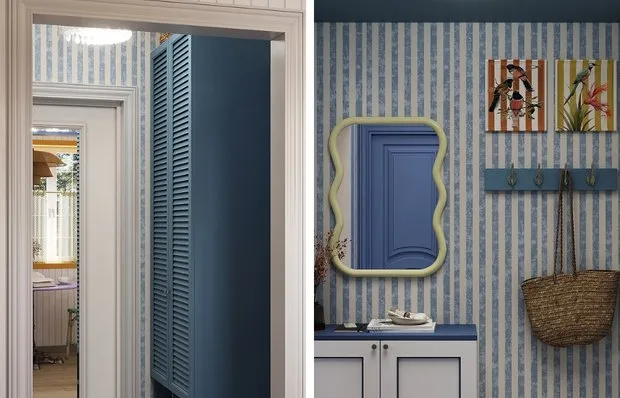 House Face: How They Decorated a 2 m² Mini Entryway with Mediterranean Atmosphere
House Face: How They Decorated a 2 m² Mini Entryway with Mediterranean Atmosphere 7 Ideas We Spotted at a 24 m² Mini-Cottage with a Unique Interior
7 Ideas We Spotted at a 24 m² Mini-Cottage with a Unique Interior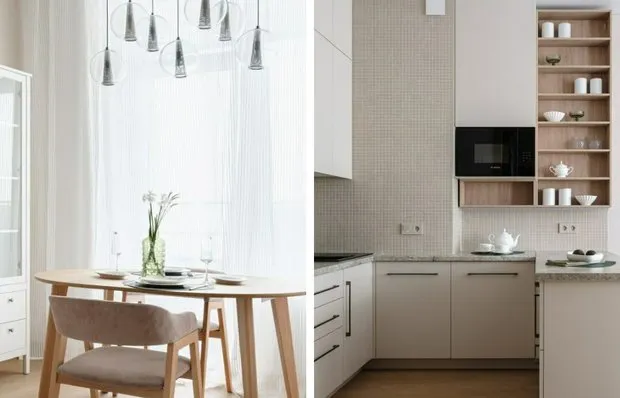 Island and Accent Display: How We Designed a Cozy Kitchen for Mom
Island and Accent Display: How We Designed a Cozy Kitchen for Mom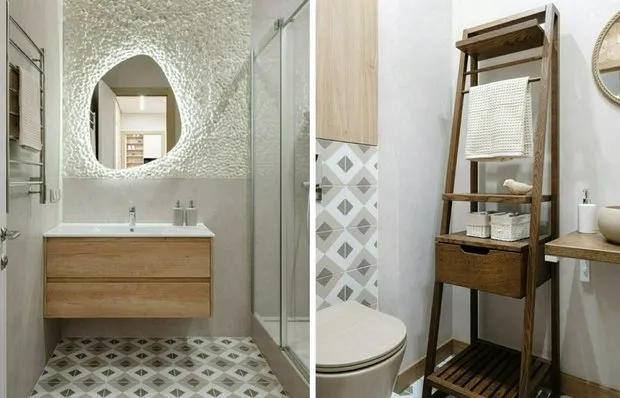 How Two Bathrooms Were Designed in One Style in a Small Euro-Style Apartment
How Two Bathrooms Were Designed in One Style in a Small Euro-Style Apartment 7 Tips for a Cozy Euro-Style Apartment of 63 m² That You Should Replicate
7 Tips for a Cozy Euro-Style Apartment of 63 m² That You Should Replicate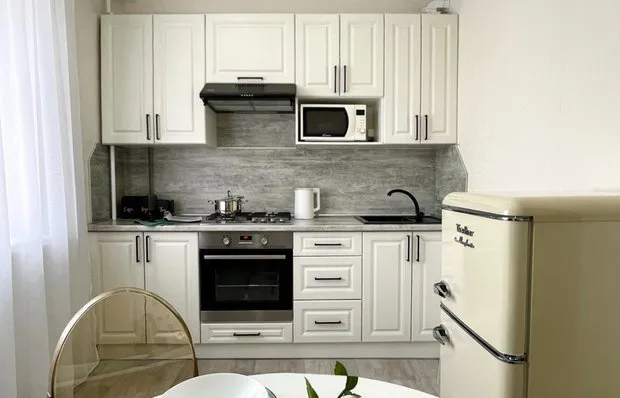 How We Transformed a 37 m² Panel Apartment into a Cozy One-Room Home in 2.5 Weeks on a Budget
How We Transformed a 37 m² Panel Apartment into a Cozy One-Room Home in 2.5 Weeks on a Budget How to Incorporate Potted Plants Into Interior Design: 6 Expert Tips
How to Incorporate Potted Plants Into Interior Design: 6 Expert Tips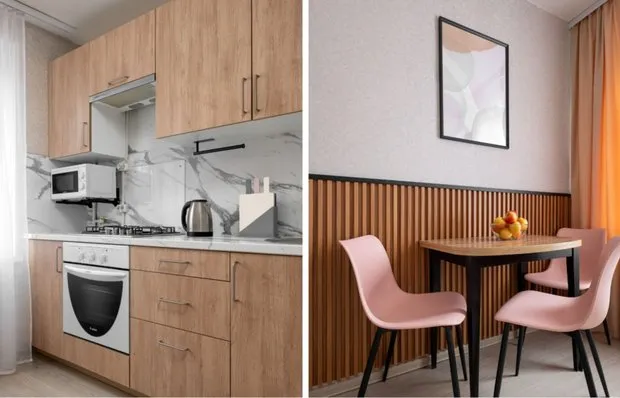 10 Ideas for a 5 m² Kitchen That Everyone Can Replicate
10 Ideas for a 5 m² Kitchen That Everyone Can Replicate